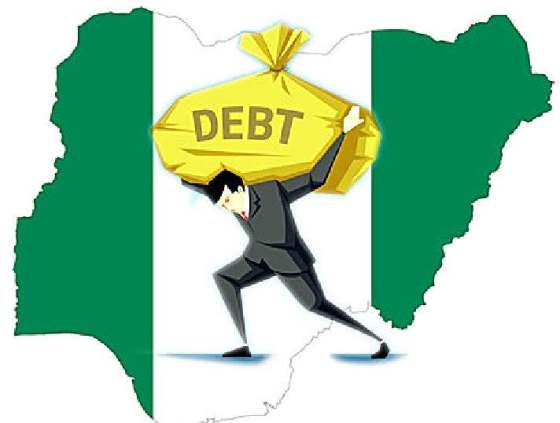
Naira Depreciation Drives Nigeria’s Debt to N149.39trn
Nigeria’s total public debt ballooned to N149.39 trillion as of March 31, 2025, according to data from the Debt Management Office (DMO), indicating a year-on-year increase of N27.72 trillion compared to N121.67 trillion recorded in the corresponding period of 2024.
The increase was largely due to naira depreciation, as it continues to affect the value of the external debt.
On a quarterly basis, the country’s debt surged by N4.72 trillion, or 3.3 per cent, from N144.67 trillion as of December 31, 2024.
This was on account of fresh borrowings and the effect of naira depreciation on foreign debt obligations.
According to the DMO data, Nigeria’s external debt as of March 31, 2025, stood at N70.63 trillion ($45.98 billion), an increase from N56.02 trillion ($42.12 billion) in the same period in 2024.
This represents a year-on-year increase of N14.61 trillion, or 26.1%. In quarter-on-quarter terms, external debt rose modestly from N70.29 trillion in December 2024 — a marginal increase of N344 billion or 0.5%.
The Central Bank of Nigeria (CBN)’s official exchange rate used for converting debt in Q1 2024 was N1,330.26 per US dollar, while 1,536.315 was applied as of 31st March, 2025.
This, according to analysts, reflects the growing concerns about the impact of naira depreciation on debt obligations.
Nigeria has several external debt obligations ranging from multilateral institutions, including the World Bank and the African Development Bank Group; bilateral loans such as China Exim Bank, and Japan International Cooperation Agency, among others, as well as commercial loans such as Eurobonds.
There was also a major increase in the domestic component of Nigeria’s debt, hitting N78.76 trillion ($51.26 billion) at the end of March 2025.
This reflects a year-on-year increase of N13.11 trillion or 20% from N65.65 trillion ($49.35 billion) in March 2024. On a quarterly basis, domestic debt rose by N4.38 trillion or 5.9%, up from N74.38 trillion in December 2024.
According to the data, dated June 27, 2025, and accessed on the website of the DMO, of the total public debt, N74.89 trillion belonged to the Federal Government while the 36 states and the Federal Capital Territory (FCT) jointly accounted for N3.87 trillion.
Also, the data indicated that domestic debt by states declined slightly from N3.97 trillion in Q4 2024 and from N4.07 trillion in Q1 2024.
Domestic debt instruments consist of government securities such as Treasury Bills, FGN Bonds, Sukuk, and Green Bonds.
There are also promissory notes, both local and foreign currency denominated P-notes.
According to DMO, the figure excludes FGN Bonds in the sum of N680.42bn issued to restructure States’ Commercial Debt but includes FGN Bonds of N22.719 trillion issued to restructure Ways and Means Advances of the CBN.
It added that the “FGN US Dollar Bond of USD917,405,000 issued in September 6, 2024, was converted to Naira using the CBN Official Exchange Rate of 1USD to N1,536.315 as at 31st March, 2025.
“The Foreign Currency Denominated P-Notes Outstanding amount of USD670,212,085 as at March, 2025, were converted to Naira using CBN Official exchange rate of 1USD to N1,536.315 as at 31st March, 2025.”
As of the first quarter of 2025, the composition of the total public debt indicated an almost equal split as domestic debt accounted for 52.7% while external debt accounted for 47.3%.
But the share of external debt, analysts say, poses a risk to the stability of the financial system amidst the volatility in the foreign exchange market.
Economic analyst and Senior Analyst at SBM Professionals, Paul Alaje, had earlier in January predicted that the debt profile might hit N150 trillion by the end of the first quarter of 2025.
“One of our 7 macroeconomic indicators and other parameters projected for the year 2025 is that Nigeria’s debt profile will cross N150 trillion. Today, we expected this in Q2, but the report shows that this may happen at the end of Q1,” he said.
SOURCE: Daily Trust
